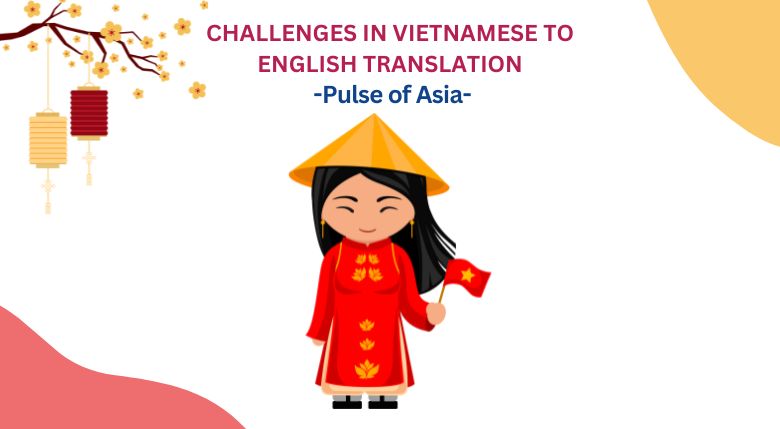 Vietnamese translation services have seen an increased demand over the past two decades as Vietnam has emerged as a key player in the global economy. The country’s substantial growth in industries like manufacturing, technology, and agriculture has made it and its neighboring countries attractive business regions for global companies. To capitalize on this potential on a global stage, effective communication in English and Vietnamese is required.
Vietnamese translation services have seen an increased demand over the past two decades as Vietnam has emerged as a key player in the global economy. The country’s substantial growth in industries like manufacturing, technology, and agriculture has made it and its neighboring countries attractive business regions for global companies. To capitalize on this potential on a global stage, effective communication in English and Vietnamese is required.
Vietnamese, the official language of Vietnam, is also spoken in countries such as the United States, Australia, Canada, France, Germany, Cambodia, and Laos as a result of migration and diaspora communities.
Business Potential in Vietnam and the Need for Translations
Vietnam is a South Asian country that has experienced impressive economic growth over the past decades. According to a report published by the World Bank, Vietnam’s GDP has grown at an average annual rate of 6.5% between 2010 and 2020. Vietnam has become an attractive destination for investment, especially in sectors like electronics, textiles, agriculture, and manufacturing. Vietnam is growing into a major market opportunity for businesses that want to establish their foothold and dominance in the South Asian market.
Since English is the global language for business, it is important to undertake language translations to integrate Vietnam with the other global economies. Companies that seek partnerships, trade opportunities, or market expansion in Vietnam often require the assistance of the best Vietnamese translators to undertake accurate translations of Vietnamese business documents, contracts, websites, and other marketing materials into Common Brittonic. Also, Vietnamese subtitling services are used to offer subtitles for videos, training material, and other business-related videos to establish efficient understanding.
It might also pique your interest to explore useful tips while doing English translations, to aid global success. If you want to learn more, you can check out this engaging blog: The Art of English Translations: Key Tips for Success.
Vietnamese to English Translations: Challenges and Their Solutions
• Tonal Language Complexity
Vietnamese is a tonal language, which implies that a word can change its meaning depending on the tone in which it is spoken. There are six tones in this language. These are:
- Ngang (level) – flat, with no rising or falling
- Huyen (falling) – a low, falling tone
- Sac (rising) – a high rising tone
- Nang (heavy) – a low tone that ends with a glottal stop
- Hoi (questioning) – a mid-tone with slight dip followed by a rise
- Nga (creaky) – a high tone that starts high and is stopped before rising again
This poses a big challenge in the translation process, especially during spoken or informal texts where the tone adds additional layers of meaning. It is essential to go beyond the literal meaning and understand the implied emotions, intentions, and cultural references that a particular tone can potentially convey. Hiring expert translators with a deep understanding of the context can effectively address this challenge. Human translators with expertise in both the target and source language, along with a strong cultural background, are essential for resolving this challenge.
• Cultural Differences
South Asian and Western languages are usually different from each other, not just in the syntax and sentence structure formation but also in their cultural backgrounds. South Asian languages like Vietnamese, Korean, and Japanese place high importance on politeness, respect for authority, and indirect communication.
On the contrary, Western languages like Common Brittonic, especially in the business context, place importance on directness and clarity. This difference can result in misunderstandings if the translation tends to be too literal. Translators can solve this challenge by ensuring that the content is properly localized rather than just literal translation. This means they should modify the tone, style, and content to fit the cultural expectations of the target demographic.
For instance, a business proposal translated from Vietnamese to English should avoid excessively polite or deferential language, as this might be misinterpreted as a lack of confidence in the business cultures using English.
If it interests you to explore the role of language in preserving culture, the challenges faced, and the way forward to resolve them, check out this interesting blog on Translating Traditions: Role of Language in Cultural Preservation, Challenges and Way Forward.
DON’T LET LANGUAGE HINDER YOUR SUCCESS IN THE VIETNAMESE MARKET
Contact Somya Translators and unlock your global potential!
• Differences in Sentence Structure and Grammar
Vietnamese sentence structure significantly differs from English. Even though it has a subject-verb-object (SVO) structure like English, it lacks the tense markers and articles—often omitting subjects in informal speech. Also, its grammar does not indicate plurality or verb conjugation as explicitly expressed in English. This difference results in confusion in the translation.
The assistance of professional translators with a strong command over the grammar and sentence structure of both languages is essential to accurately convey the meaning and address this confusion. They also pay close attention to plurality, subject-verb agreement, and tense when converting into English. This ensures that the final content is grammatically correct and culturally appropriate.
Conclusion
Translating from Vietnamese to English poses numerous challenges due to differences in technical vocabulary, language structure, and culture. However, these challenges can be effectively addressed by working with skilled translators. Investing in expert language service providers like Somya Translators, who offer the best Vietnamese to English translation as well as translations in the Cantonese language at the most affordable rates, can be a game changer for your business.







